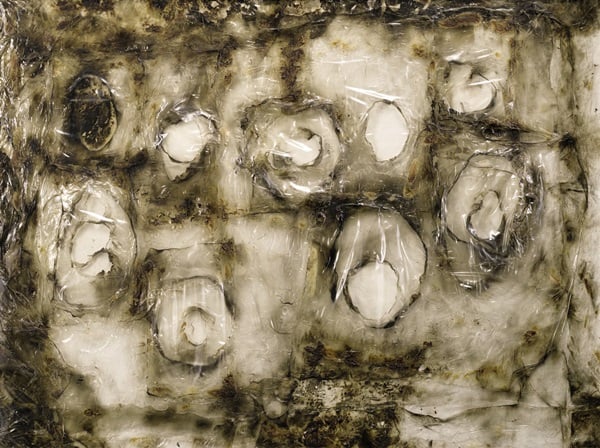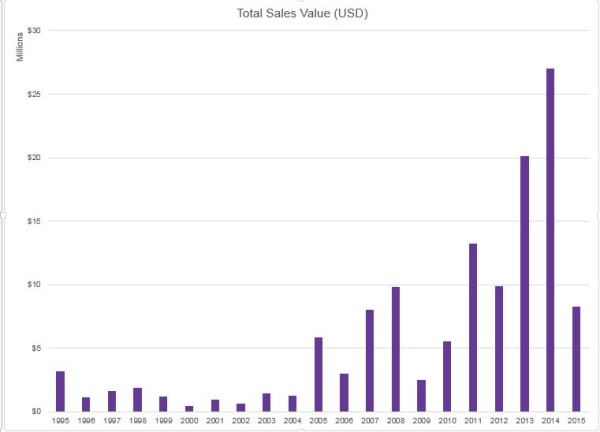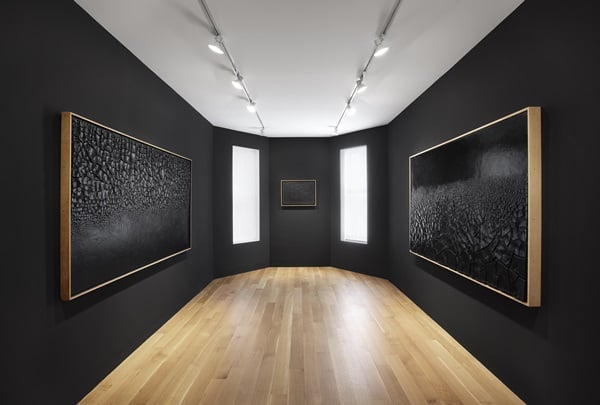Art & Exhibitions
A Century Later, Artist Alberto Burri Is Finally Getting His Due
Why the art world is now honoring the postwar Italian master.

Why the art world is now honoring the postwar Italian master.

Eileen Kinsella

A century after Alberto Burri was born, the Italian postwar artist is having a moment.
Burri’s work seems to be everywhere this fall, from a major retrospective, “Alberto Burri: The Trauma of Painting,” which opened this month at the Solomon R. Guggenheim Museum in New York, to gallery shows in key cities.
New York gallery Luxembourg & Dayan is currently displaying “Alberto Burri: Grafica” at its Upper East Side space—a show that reflects Burri’s innovative printmaking process. Cofounder Daniella Luxembourg has been a longtime champion and fan of the artist. She told artnet News in an email, “He used materials that were innovative and sometimes dangerous.” Not to be outdone, Mazzoleni Gallery in London has a landmark solo show of works from various stages of Burri’s career on view until the end of November.

Alberto Burri, Bianco Plastica 1 (1961).
Image: Courtesy of Sotheby’s.
It is fitting that Burri is receiving so many art world accolades this year, 20 years after his death. The Italian artist first drew attention more than six decades ago for his use of unconventional materials and techniques, involving everything from burlap sacks, steel, plastic, and fire. He first embraced and began experimenting with such materials as a way of making art and redefining painting following the Second World War. While serving as a doctor for Italian troops in North Africa, Burri was captured by Allied troops and then shipped to a prisoner of war camp in the US. Not surprisingly, given his exposure to the atrocities of war, critics often point to wounds, scars and signs of decay in his work.
Burri “was very well known here in the early 50s, beginning in 1953 when [painter and critic] Fairfield Porter was reviewing his work,” said Emily Braun, curator of the Guggenheim retrospective, at the press preview for the show. Braun also noted a midcareer survery for the artist at the Carnegie in 1957, and significant gallery shows including at Martha Jackson, Stable Gallery, and Marlborough in Europe in the early 1960s.

Alberto Burri Rosso Plastica (Red Plastic) (1961).
Photo: Massimo Napoli, Rome, courtesy Modern Art Foundation.
“Unlike some of his compatriots—such as artists associated with the Zero group, or Lucio Fontana, who was aggressively pushing Spatialism, Burri never really committed to or identified with a single movement.” Braun notes, however, that much of his work anticipated movements like minimalism and post-minimalism.
As the Guggenheim retrospective shows, Burri never stopped exploring and experimenting, whether his work was in fashion or not. Along with the better known series of Sacchi (sacks) made of stitched and patched burlap bags and old clothing, are his other series, including: Catrami (tars), Muffe (molds), Gobbi (hunchbacks), Bianchi (whites), Legni (woods), Ferri (irons), Combustioni plastiche (plastic combustions), Cretti, and Cellotex works. All of the pieces have simple titles, since Burri wasn’t a fan of elaborate names. The titles simply describe the object, letting the viewer make connections between Burri’s work in medicine, and his fascination with Catholic forms, such as the cross and the Virgin.

Auction sales of Alberto Burri’s work, 1995–2015.
Source: artnet Analytics.
While the market for Burri’s work—particularly among serious collectors—has hardly ever been lacking, auction sales in the past few years have definitely been on the rise.
“Historically Burri never really sold a lot of paintings,” said Daniella Luxembourg, “but when he sold them, he sold them quite expensively because he always believed in himself.” She notes that they were frequently snapped up by prestigious collectors including the Agnelli family and other international buyers, who held on to them.
Luxembourg, who bought her first work by Burri in 2001, has organized several posthumous gallery shows of his work, including in Zurich in 2008, one in New York in 2010, as well as the current show. An ardent fan of Burri’s work, she describes it as “hugely authentic,” and says it “has a strong sense of power about it.”

A solo Burri show at Luxembourg and Dayan in 2010.
Image: Courtesy of Luxembourg and Dayan.
According to the artnet Price database, a total of 29 works by Burri have sold for more than $1 million each at auction. The current record of $7.7 million (£4.7 million) was set at Christie’s London in February 2014 for Combustione Plastica (1960-61) on an estimate of $2.8 million to $3.6 million.
At Sotheby’s October 15 Italian sale in London, all of the Burri works on offer sold. The highest price was $4 million (£2.6 million) paid for Bianco Plastica I, which had an estimate of $2.3 million-$4.8 million (£1.5 million-£2 million).
Next up, a rare red plastic canvas, Rosso Plastico (1961), has an estimate of $3 million to $4.6 million (£2 million to £3 million), at Christie’s October 16 auction of Italian art in London.
Claudia Dwek, Sotheby’s deputy chairman Europe, told artnet News via email, “In the last three to four years the Sacchi, the Combustioni and the Cretti have all performed particularly well at auction.” She points out that “five years ago the record for a Burri stood at $3.8 million and today it stands at $7.7 million.”
The reason why, Dwek explains, is that “the market has been bolstered in part by growing interest from North American collectors—not just in Burri, but [Lucio] Fontana, [Piero] Manzoni and the other leading proponents of post-war Italian art.”
Despite the difficulty of placing the artist within a certain movement, Burri’s worth keeps climbing.